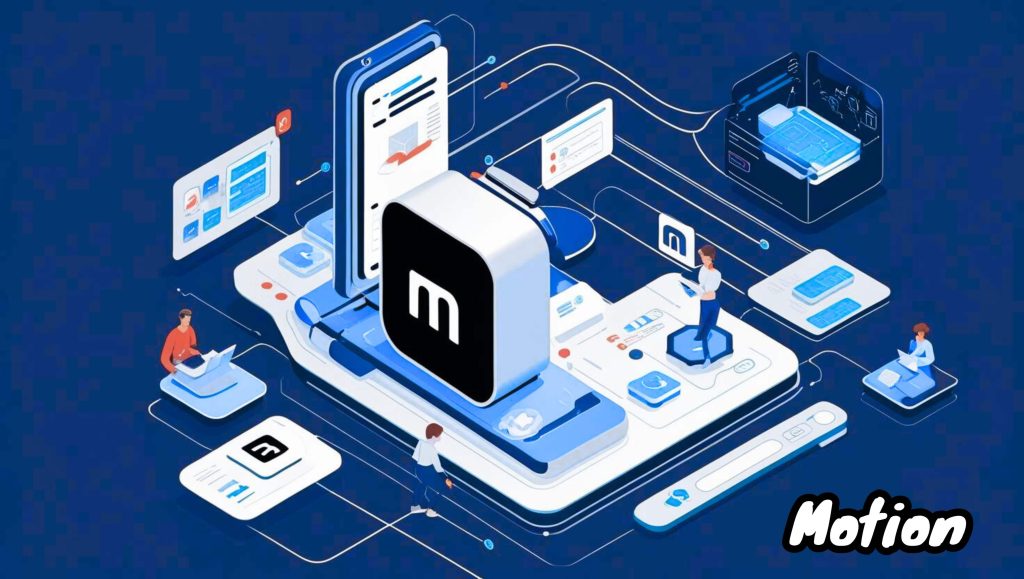Why productivity needs a new approach in 2025
You’ve probably noticed that working harder isn’t cutting it anymore. Your to-do list grows faster than you can check things off, distractions pile up, and no matter how many productivity hacks you try, it still feels like you’re behind.
That’s because traditional productivity methods were built for a different era. In 2025, you’re operating in an environment of constant digital noise. Notifications, messages, endless tabs, and back to back meetings all compete for your attention. It’s not just about time management anymore it’s about managing mental bandwidth.
The problem with old productivity systems
Here’s what’s breaking down in today’s fast paced world:
-
Overreliance on manual planning: Writing out tasks doesn’t solve the problem if priorities are always shifting.
-
Multitasking culture: Trying to do everything at once often means finishing nothing with quality.
-
Decision fatigue: You’re making hundreds of small decisions daily, which drains your mental energy before you even get to the important work.
Why AI is changing the game
Artificial intelligence is no longer a futuristic concept. It’s quietly woven into the apps and systems you already use filtering emails, scheduling meetings, and suggesting content. But here’s the thing: most people are letting AI work in the background instead of putting it to work intentionally.
By integrating AI into your productivity strategy, you can automate low value tasks, make smarter decisions faster, and stay focused on what truly matters. The goal isn’t to cram more into your schedule. It’s to free up space mental, physical, and emotional for deep, meaningful work.
A smarter way forward
You don’t need another productivity app. What you need is a smarter system that works with you, adapts to your needs, and makes your workflow smoother, not more complicated. And that’s exactly what AI offers if you know how to use it right.
What AI can actually do for your productivity
You’ve heard the hype AI is going to change everything. But what does that really mean for your day to day productivity? It’s not just about having a virtual assistant or automating your emails. The real benefit of AI is its ability to support the way you work, without getting in your way.
Automate the tasks that drain your time
Think about how much time you spend on small, repetitive tasks: sorting emails, scheduling calls, updating spreadsheets, or switching between tabs just to copy and paste. These are perfect candidates for automation. With AI, you can offload these tasks so you can stay focused on the work that actually moves the needle.
Prioritize without overthinking
One of the biggest challenges in being productive isn’t doing the work it’s knowing what to do next. AI can help here too. With smart systems that learn your preferences, habits, and patterns, you get real-time recommendations on what to focus on and when. This means fewer decisions for you to make, and more clarity on your top priorities.
Stay focused longer, with less effort
AI can also act as a buffer against distractions. It can mute non essential notifications, track your focus sessions, and nudge you when you’re veering off track. It’s like having a personal productivity coach that gently keeps you aligned with your goals without being annoying.
Learn your habits and adapt over time
The more you use AI intentionally, the more it can tailor itself to how you work best. Whether you’re a morning person who thrives on structure or someone who works in bursts of creative energy, AI can support your unique rhythm not force you into a rigid system.
Key areas where AI enhances productivity
To make AI work for you, it helps to understand the main parts of your workflow it can improve. When you focus on these key areas, you’ll notice your day runs smoother, your energy lasts longer, and your output gets better.
Task and project management
You probably have a long list of things to do some urgent, some important, and some that can wait. AI can help you sort through this chaos by automatically organizing tasks based on deadlines, dependencies, and priority levels. Instead of manually juggling your to-do list, AI lets you focus on doing the work that matters most.
Calendar and scheduling
Scheduling meetings and managing your calendar can eat up precious time. AI can analyze your availability, preferences, and priorities to suggest the best times for meetings or even reschedule conflicts for you. This means fewer back and forth emails and more time for uninterrupted work.
Communication and email handling
Your inbox can feel like a never ending chore. AI can filter, categorize, and even draft responses for your emails, so you only deal with what truly requires your attention. This keeps your communication clear and efficient without overwhelming you.
Note taking and idea organization
Ideas pop up anytime, anywhere and keeping them organized can be a challenge. AI powered note taking tools can transcribe voice memos, summarize lengthy notes, and link related concepts automatically. This helps you capture inspiration and find what you need exactly when you need it.
Time tracking and daily planning
Knowing where your time goes is key to staying productive. AI can track how you spend your day across different apps and activities, then provide insights and suggestions for better time management. With this data, you can plan your days more realistically and make adjustments to improve your workflow.
How to build your AI enhanced workflow
You already know AI can boost your productivity but the magic happens when you build a system that fits your unique needs. Here’s how to set up an AI-enhanced workflow that helps you work smarter, not harder.
Define your goals and work style
Start by clarifying what productivity means to you. Are you aiming to reduce distractions? Get more done in less time? Or maybe focus better on deep work? Understanding your goals will guide how you use AI to support your workflow.
Think about your work style, too. Are you someone who thrives on routine or prefers flexibility? AI works best when it adapts to your natural rhythms rather than forcing you into a strict schedule.
Identify tasks to delegate to AI
Next, list out repetitive or low value tasks you’d like to offload. This could be anything from scheduling meetings and managing emails to tracking project progress or summarizing notes.
By clearly identifying these tasks, you give AI a clear role freeing you to focus on high-impact work that only you can do.
Set up a daily and weekly routine with AI support
Integrate AI into your regular routines. For example:
-
Use AI to plan your day first thing in the morning, prioritizing your most important tasks.
-
Let AI remind you of deadlines and upcoming meetings.
-
At the end of the week, review insights from AI tools to adjust your plans and improve.
This consistent rhythm helps AI become a natural part of your workflow, not an extra chore.
Monitor and adjust as you go
No system is perfect out of the box. Pay attention to what’s working and what isn’t. Are there tasks AI isn’t handling well? Are you overwhelmed by automation?
Be ready to tweak your setup. The best workflows are flexible and evolve with your needs.
Common pitfalls to avoid
While AI can supercharge your productivity, it’s not without its challenges. Knowing what to watch out for will save you time, frustration, and burnout.
Don’t rely too much on automation
It’s tempting to hand over everything to AI, but too much automation can backfire. When you automate tasks without clear oversight, you risk losing control or missing important nuances. Remember, AI should be your assistant not your boss.
Avoid tool overload
Adding AI to your workflow doesn’t mean stacking on every new app you find. Too many tools create confusion, increase setup time, and can actually slow you down. Choose a few AI tools that integrate well with your current systems and meet your specific needs.
Don’t forget the human element
AI is powerful, but it can’t replace your judgment, creativity, or focus. Use AI to handle routine tasks and provide insights, but make sure you stay intentional about your goals and priorities. Your productivity depends on your active engagement, not just automation.
Beware of privacy and data concerns
Some AI tools collect and analyze personal data to work effectively. Always check privacy policies and choose trusted platforms to keep your information secure. Protecting your data is part of staying productive without stress.
Looking ahead: the future of AI and personal productivity
The way you work today will look very different in just a few years. AI is evolving rapidly, and staying ahead means understanding where productivity technology is headed.
Predictive productivity and proactive support
Future AI won’t just react to your commands it will anticipate your needs. Imagine AI that predicts your busiest days, suggests when to take breaks, or even prepares reports before you ask. This kind of proactive support could reduce mental load and help you stay one step ahead.
More natural, conversational AI
Interacting with AI will become more intuitive and human like. Instead of navigating complex menus or commands, you’ll be able to talk naturally with your AI tools asking questions, delegating tasks, and getting help seamlessly. This will make AI feel less like a tool and more like a teammate.
Staying adaptable in a fast evolving environment
As AI tools improve, new opportunities and challenges will emerge. To keep your productivity sharp, you’ll need to stay curious and adaptable willing to experiment with new approaches and adjust your workflow. The best results come from blending human creativity with AI’s strengths.
AI isn’t a magic fix that instantly makes you productive. Instead, it’s a powerful tool that, when used thoughtfully, amplifies your efforts and helps you work smarter, not harder. By embracing AI as a partner in your workflow, you can reduce overwhelm, prioritize what truly matters, and create more space for focused, meaningful work.
Remember, productivity in 2025 isn’t about squeezing more tasks into your day it’s about making intentional choices, supported by smart technology, that help you achieve your goals with less friction. The future of work is here, and AI is your key to unlocking it.
Ready to transform your productivity? Start small, experiment with AI in one area of your workflow, and build from there. The smarter way to work is waiting for you.
What’s your biggest productivity challenge right now?
Have you started using AI to work smarter, not harder? Share your experiences or questions in the comments below I’d love to hear how AI is changing your workflow or help you get started!


